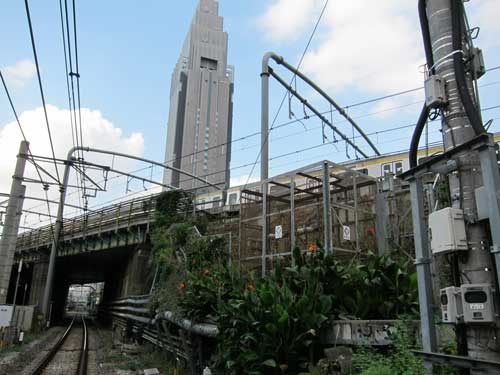
I have been thinking about the urban corridors and the distributed real estate that connect city people literally and experientially. Everything from rail lines that take us where we are going to convenience stores that make us feel that we are in the same place no matter where we are. Rail companies and retail chains own or operate so much real estate to make them second only to governments in terms of land ownership and possibilities for remaking our environment.
I love the chaotic, multi-directional rail lines in Yoyogi- two sets of elevated lines and street-grade lines taking traffic from Shinjuku to other parts of Tokyo, towns and resorts to the west, and across Japan. As a pedestrian, the rail crossings slow down your walk and make you aware of the millions of people circulating in Tokyo.
I’ve blogged before about the cool wildflowers with some unplanned cultivation on the sides of the tracks. The rail companies must be concerned about safety, including keeping neighbors safe and also minimizing garbage on the tracks. Yet it’s great that this land exists in a semi-wild state, and cool that it’s so accessible in Yoyogi. I wonder what further uses the lands beside rail tracks and stations could have in cities, suburbs, and countryside. Wildlife habitat, small farms, recreation, bee hives, or other uses.

